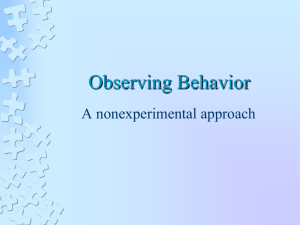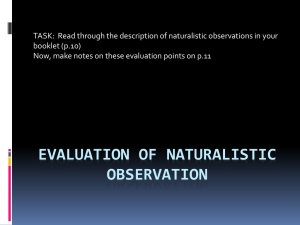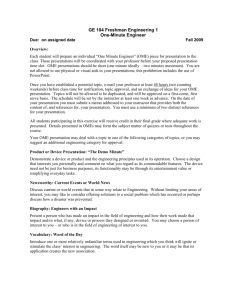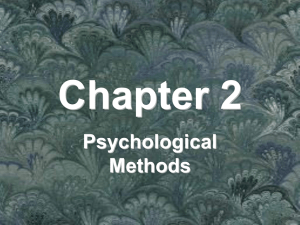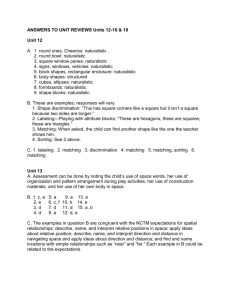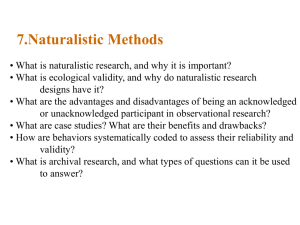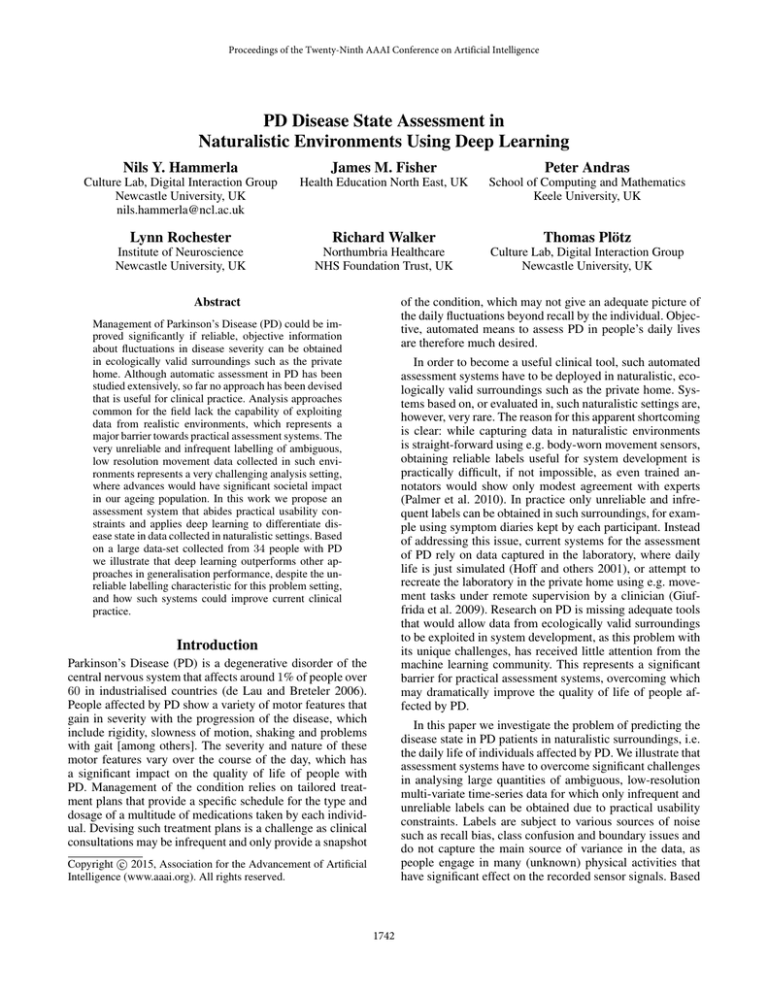
Proceedings of the Twenty-Ninth AAAI Conference on Artificial Intelligence
PD Disease State Assessment in
Naturalistic Environments Using Deep Learning
Nils Y. Hammerla
James M. Fisher
Peter Andras
Culture Lab, Digital Interaction Group
Newcastle University, UK
nils.hammerla@ncl.ac.uk
Health Education North East, UK
School of Computing and Mathematics
Keele University, UK
Lynn Rochester
Richard Walker
Thomas Plötz
Institute of Neuroscience
Newcastle University, UK
Northumbria Healthcare
NHS Foundation Trust, UK
Culture Lab, Digital Interaction Group
Newcastle University, UK
Abstract
of the condition, which may not give an adequate picture of
the daily fluctuations beyond recall by the individual. Objective, automated means to assess PD in people’s daily lives
are therefore much desired.
Management of Parkinson’s Disease (PD) could be improved significantly if reliable, objective information
about fluctuations in disease severity can be obtained
in ecologically valid surroundings such as the private
home. Although automatic assessment in PD has been
studied extensively, so far no approach has been devised
that is useful for clinical practice. Analysis approaches
common for the field lack the capability of exploiting
data from realistic environments, which represents a
major barrier towards practical assessment systems. The
very unreliable and infrequent labelling of ambiguous,
low resolution movement data collected in such environments represents a very challenging analysis setting,
where advances would have significant societal impact
in our ageing population. In this work we propose an
assessment system that abides practical usability constraints and applies deep learning to differentiate disease state in data collected in naturalistic settings. Based
on a large data-set collected from 34 people with PD
we illustrate that deep learning outperforms other approaches in generalisation performance, despite the unreliable labelling characteristic for this problem setting,
and how such systems could improve current clinical
practice.
In order to become a useful clinical tool, such automated
assessment systems have to be deployed in naturalistic, ecologically valid surroundings such as the private home. Systems based on, or evaluated in, such naturalistic settings are,
however, very rare. The reason for this apparent shortcoming
is clear: while capturing data in naturalistic environments
is straight-forward using e.g. body-worn movement sensors,
obtaining reliable labels useful for system development is
practically difficult, if not impossible, as even trained annotators would show only modest agreement with experts
(Palmer et al. 2010). In practice only unreliable and infrequent labels can be obtained in such surroundings, for example using symptom diaries kept by each participant. Instead
of addressing this issue, current systems for the assessment
of PD rely on data captured in the laboratory, where daily
life is just simulated (Hoff and others 2001), or attempt to
recreate the laboratory in the private home using e.g. movement tasks under remote supervision by a clinician (Giuffrida et al. 2009). Research on PD is missing adequate tools
that would allow data from ecologically valid surroundings
to be exploited in system development, as this problem with
its unique challenges, has received little attention from the
machine learning community. This represents a significant
barrier for practical assessment systems, overcoming which
may dramatically improve the quality of life of people affected by PD.
Introduction
Parkinson’s Disease (PD) is a degenerative disorder of the
central nervous system that affects around 1% of people over
60 in industrialised countries (de Lau and Breteler 2006).
People affected by PD show a variety of motor features that
gain in severity with the progression of the disease, which
include rigidity, slowness of motion, shaking and problems
with gait [among others]. The severity and nature of these
motor features vary over the course of the day, which has
a significant impact on the quality of life of people with
PD. Management of the condition relies on tailored treatment plans that provide a specific schedule for the type and
dosage of a multitude of medications taken by each individual. Devising such treatment plans is a challenge as clinical
consultations may be infrequent and only provide a snapshot
In this paper we investigate the problem of predicting the
disease state in PD patients in naturalistic surroundings, i.e.
the daily life of individuals affected by PD. We illustrate that
assessment systems have to overcome significant challenges
in analysing large quantities of ambiguous, low-resolution
multi-variate time-series data for which only infrequent and
unreliable labels can be obtained due to practical usability
constraints. Labels are subject to various sources of noise
such as recall bias, class confusion and boundary issues and
do not capture the main source of variance in the data, as
people engage in many (unknown) physical activities that
have significant effect on the recorded sensor signals. Based
c 2015, Association for the Advancement of Artificial
Copyright Intelligence (www.aaai.org). All rights reserved.
1742
on a large data-set that contains approx. 5, 500 hours of
movement data collected from 34 participants in realistic,
naturalistic settings, we compare how deep learning and
other methods are able to cope with the characteristic label
noise. We find that deep learning significantly outperforms
other approaches in generalisation performance, despite the
unreliability of the labelling in the training set. We show
how such systems could improve clinical practice and argue
that such a setting could serve as a novel test-bed for unsupervised or semi-supervised learning, where improvements
would have significant societal impact.
tical assessment systems.
The reliance on controlled laboratory environments stems
from the difficulties encountered when collecting and exploiting data from in naturalistic surroundings. This issue is
split into two aspects. The most pressing concern from a machine learning perspective relates to obtaining ground-truth
information about disease state in PD in naturalistic environments. Even if e.g. video recordings can be obtained, which
is unlikely, it can be difficult for annotators to assess the disease state with high reliability (Palmer et al. 2010). Instead,
labels have to be obtained in cooperation with the patients,
where the common best practice are disease state diaries
(Reimer et al. 2004). Such diaries just provide an infrequent
(e.g. one sample per hour) and unreliable impression of the
disease state. Participants may have trouble identifying their
own disease state, or fill out the diary retrospectively (recall
bias). Additionally, the disease characteristics evolve gradually and are unlikely to change exactly on the hour, leading
to issues at the boundaries of the provided labelling.
The second aspect relates to usability aspects of the sensing system. Recording (unlabelled) data in naturalistic settings is straight-forward if sensing solutions require little
cooperation by the patient, do not rely on external infrastructure, abide by privacy constraints, and follow a suitable physical design of the devices (McNaney et al. 2011).
Any practical sensing system will necessarily be a compromise between the obtainable sensing resolution (e.g. degrees
of freedom, number of sensors, ambiguity of recordings)
and abiding usability constraints of the target population to
maximise compliance. The most suitable sensing approach
for naturalistic deployments are small body-worn movement
sensors (Maetzler et al. 2013), which capture multi-variate
time-series data that give an impression of the participant’s
physical activity and overall behaviour with a large amount
of noise and inherent ambiguity. The main sources of variance in this movement data are the physical activities that
participants engage in, such as walking, and not the overall
disease state. The disease state rather has an effect on how
activities are performed (e.g. ”slower” while off ). However,
the activities that participants engage in are unknown, as collecting additional activity logs to gain an impression of the
physical activities of participants would be too burdensome
for longitudinal settings, particularly if participants suffer
from cognitive decline. This also renders approaches such
as active learning (e.g. (Stikic, Van Laerhoven, and Schiele
2008)) difficult to apply for this population, as they also require significant cooperation by the individual.
We can summarise the challenges for exploiting naturalistic data in this setting as follows: i) There is a significant
disparity between the frequency at which data is collected
(e.g. 100Hz) and the accessible labelling (e.g. one per hour);
ii) The participant-provided labelling is inherently unreliable, subject to recall bias, class confusion and boundary
issues; iii) The recorded data mostly reflects unknown activities, across which an assessment system has to generalise to obtain an impression of disease state in PD. Addressing these challenges through methodological advances
would have significant impact on clinical practice for PD
and other degenerative conditions where assessment faces
Assessing disease state in naturalistic
surroundings
The quality of life of people with PD is significantly affected by fluctuations in the severity of the disease. Periods where motor symptoms (such as tremor or bradykinesia) are more prominent are typically referred to by clinicians and patients as ”off time”. Conversely, periods where
motor symptoms are well controlled are referred to as ”on
time”. As the condition progresses, motor fluctuations between these differing disease states become more frequent
and less predictable. Furthermore, prolonged medication usage is associated with the development of additional involuntary movements known as dyskinesia. Tailored treatment
plans aim to reduce the severity of these fluctuations. In this
work we focus on the assessment of disease state in PD, as
it represents a crucial component for improved management
of the condition in clinical practice.
In order to be useful for clinical practice, such assessment systems have to be applicable in naturalistic, ecologically valid surroundings such as the private home. Yet research on automated assessment in PD generally does not
address this issue. Systems are based on laboratory environments, where participants engage in a series of movement tasks that are part of the clinical assessment procedure in PD (Goetz et al. 2008; Patel et al. 2009). With
extensive instrumentation of the participants those system
achieve very good results in e.g. detecting dyskinesia with
more than 90% accuracy (Tsipouras et al. 2010). However,
such scripted movement tasks, even if extended to include
activities of daily living to simulate daily live (Hoff and others 2001), are only a very poor model of naturalistic behaviour. Some systems aim to re-create the clinical assessment in the daily life of a subject while being supervised by
a clinician (remotely), effectively simulating such laboratory
conditions in naturalistic surroundings (Mera et al. 2012;
Giuffrida et al. 2009). Whether individual assessment systems generalise to naturalistic environments is rarely explored, where a recent review just found 3 out of 36 studies to include data recorded in naturalistic settings, although
the authors specifically focussed on this aspect (Maetzler
et al. 2013). Even where naturalistic data is gathered it is
not utilised during system development, but instead being
used to gain some insight into the performance of systems
based on medical prior knowledge (e.g. (Griffiths et al. 2012;
Hoff, Van Der Meer, and Van Hilten 2004)). This laboratorydriven research represents a significant barrier towards prac-
1743
involvement and ethical approval was obtained from the relevant authorities. The study was split into two subsequent
phases:
similar issues.
System overview
In response to these challenges we develop a novel approach
to the assessment of disease state in PD. Instead of basing the development of our approach on data collected in
a laboratory setting, we exploit large amounts of data gathered in naturalistic surroundings, the daily life of people affected by PD. In many applications of machine learning it is
easy to obtain large amounts of unlabelled data, and devising
systems capable of exploiting such data to improve recognition performance has become a popular field in machine
learning. One approach that has been shown to be effective
for e.g. phoneme recognition (Deng, Hinton, and Kingsbury
2013) and object recognition (Lee et al. 2009) is deep learning, where unlabelled data is used to greedily initialise multiple layers of feature extractors. In this work we apply deep
learning to the problem of disease state assessment in PD
to explore if these methods can cope with the unreliable labelling that results from naturalistic recording environments.
Our system comprises a typical analysis pipeline common
for activity recognition in ubiquitous computing (Bulling,
Blanke, and Schiele 2014). First the captured data is segmented using a sliding window procedure, after which a
hand-crafted set of features is extracted from each frame. In
cross-validation experiments these features are then used to
train a sequence of Restricted Boltzmann Machines (RBMs)
(Hinton, Osindero, and Teh 2006). A softmax top-layer is
added to the trained generative model which is further finetuned using conjugate gradients to maximise classification
performance.
Phase 1 (L AB) consists of lab-based recordings. Participants attended a movement research laboratory without having taken their early morning dose of medication (where
possible) and spent on average 4 hours in the facility while
wearing the sensing system. At regular intervals (e.g. once
per hour or more), the current state of the disease was assessed by a clinician. Based on video recordings, a second clinician rated the disease state for each examination.
Assessments where the two clinicians disagreed where discarded (overall agreement > 0.95). Data is extracted surrounding each of the 141 remaining assessments. The assessment itself is removed as participants engage in a series
of movements selected to assist within clinical evaluation
but are highly unlikely to be representative of naturalistic
behaviour. Data from phase 1 is denoted as L AB throughout
the rest of this work.
Phase 2 (H OME) corresponds to longitudinal recordings
in the participant’s private homes. After completing phase
1, participants wore the sensing system continuously over
the course of a week, including at night. Each participant
filled out a disease state diary, a pre-formatted document
where ticks indicate disease state for each hour, to the best
of their abilities. The diary included: asleep, off, on, and
(troublesome) dyskinesia. A total of approx. 5, 500 hours of
accelerometer data was collected, for which approx. 4, 500
hourly labels were provided by the participants ( 80% diary
compliance). The labels are inherently unreliable, as symptom characteristics are very unlikely to change exactly on
the hour, participants may have trouble classifying their own
disease state, and diaries may be filled out retrospectively at
the end of the day. Data collected in phase 2 is denoted as
H OME throughout the rest of this paper.1
Wearable sensing system
Our sensing setup consists of two movement sensors, one
worn on each wrist of the participant, which have been used
in previous applications such as in Autism research (Plötz
et al. 2012), and sports (Ladha et al. 2013). The movement
sensors contain a tri-axial accelerometer that measures acceleration along three perpendicular axes with high temporal resolution (100 Hz). On a single charge, such devices
are able to capture acceleration data for up to 12 days. The
sensors are attached using comfortable velcro straps and are
waterproof. Colour coding ensured that the sensor location
and orientation remained constant throughout the study. This
sensing system represents a compromise between usability
and signal quality. The small number of sensors in a convenient location along with their high usability allow data
capture in the daily life of the participants with very high
compliance. However, for the sake of prolonged battery life
no further modalities beyond accelerometers were included
(e.g. gyroscopes, magnetometer).
Pre-processing and feature extraction
Each disease state is characterised by different expressions
of the common motor features in PD. During the off state,
people with PD feel slow, stiff and may show increased
tremor. In the on state, symptoms are less severe and tremor
may disappear completely. Bouts of dyskinesia present as
somewhat repetitive involuntary movements that may involve the wrists. Crucially the recorded data does not just
contain the expression of the disease states but includes (unknown) naturalistic physical activities that have significant
effect on the recorded signal. We extract features from segmented accelerometer data, where each segment spans one
minute in duration. In these relatively long segments we aim
to even out the impact of physical activities and try to capture the underlying characteristics, expressed as differences
in the distribution of the acceleration measurements.
From the raw recordings contained in each frame f t =
t
(fL , fRt ) ∈ Rn×6 the acceleration magnitudes for each sensor mL , mR are estimated which are subsequently filtered
Data collection
Overall 34 participants were recruited who exhibited mild
to severe level Parkinson’s Disease (Hoehn and Yahr stages
I-IV (Hoehn and Yahr 1998)), were not significantly cognitively impaired and were taking immediate-release levodopa
medication. All participants provided informed consent for
1
1744
Data-set is available at http://di.ncl.ac.uk/naturalisticPD.
using a high-pass filter with a cut-off frequency of 0.5Hz
to remove the gravitational component. The filtered magnitudes are used to obtain their first derivatives (jerk) jL , jR .
The magnitude of orientation change cL , cR is calculated
from the raw recordings of each sensor as follows:
(1)
cL = cos−1 (fL,i · fL,i+1 ) i=1···(n−1) ,
In the first epoch the weights in all but the top layer remain
fixed. Training time averages to around one day per fold on
a GPU.
Experimental evaluation
Two scenarios are investigated in this work. In the first setting, a variety of approaches and network architectures are
trained on the H OME data-set. To minimise the effect of
large pairwise similarity of subsequent minutes of recording
we follow a leave-one-day-out cross validation approach,
where e.g. the first day of recording from all patients constitutes a fold. This represents a compromise between realistic
assessment of generalisation performance and the required
computational effort for training (which is extensive). The
second setting simulates best practice for assessment systems in PD, where the smaller but clinician validated L AB
data-set is used for training in a stratified 7-fold cross validation which is subsequently applied to the H OME data-set
to assess generalisation performance.
In total the H OME data-set contains approx. 270, 000 samples (minutes) and the L AB data-set contains 1, 410 samples
extracted from the recordings surrounding 141 individual
disease-state assessments. Additional minutes are extracted
for networks that span more than one minute in their input,
such that the overall number of samples is retained. Since
e.g. the H OME data-set is highly skewed towards asleep
(31%) and on (41%) we chose the mean F1 score as primary
performance metric:
where (·) denotes the vector dot-product, fL,i ∈ R3 are the
recordings of sensor L at position i (relative time within
frame). cR is calculated accordingly for the sensor on the
right wrist. Based on mL and mR we estimate the power
spectral density pL , pR using a periodogram on 10 frequency
bands between 1 and 8 Hz to capture repetitive movements
typical for motor features in PD.
We capture the statistical characteristics of the movement
within a frame using the ECDF representation introduced in
(Plötz, Hammerla, and Olivier 2011; Hammerla et al. 2013),
which corresponds to concatenated quantile functions along
with their mean. For each frame we obtain its feature representation xt by concatenating the ECDF representations
of the acceleration magnitudes mL , mR , jerk jL , jR , orientation change cL , cR and power spectral density pL , pR .
We further include the time spent not moving (threshold on
cL +cR ) as in (Griffiths et al. 2012), energy, minimum, maximum, standard deviation of mL , mR and binary PD phenotype (tremor-dominant). Using 10 coefficients in the ECDF
representation we extract a total of 91 features from each
minute of sensor recordings. In the future, this hand-crafted
feature extraction will be substituted with a convolutional architecture alleviating the need for medical prior knowledge.
c
2 X preci × recalli
,
c i=1 preci + recalli
Training procedure
(2)
where preci corresponds to the precision, recalli to the
recall observed for class i and c to the number of classes. The
L AB data-set does not contain any instances of asleep and
the performance is evaluated just using the remaining three
classes, even though false positives for asleep are included
in the calculation of sensitivity and precision.
To illustrate the difficulty of the problem we compare the
approach proposed in this work with standard classification
methods typical for automated assessment systems in PD.
We apply decision trees (C4.5), Naive Bayes (NB), and nearest neighbour classification(1-NN). We further apply support vector machines (SVM) with an rbf-kernel for training on the L AB data-set. On the H OME data-set we failed to
achieve convergence to non-trivial solutions in SVMs. In order to investigate the impact of the layout of the deep ANN
proposed in this work we evaluate a number of different network topologies the results of which are discussed below.
The training procedure comprises of two steps. First the realvalued features are normalised to have zero mean and unit
variance (per fold in cross validation). We then apply RBMs
to learn a generative model of the input features (Hinton,
Osindero, and Teh 2006). After training the first RBM, the
activation probabilities of its feature detectors are used as
input data for the next RBM. This way, RBMs can be used
to greedily initialise deep neural networks by adding more
and more layers (Hinton and Salakhutdinov 2006). We learn
at most two consecutive RBMs, where the first one contains
gaussian visible units (gaussian-binary) to model the realvalued input features and the next one just contains binary
units (binary-binary). Learning rates were set to 10−4 for
the gaussian-binary RBM, and 10−3 for the binary-binary
RBM, with a momentum of 0.9 and a weight-cost of 10−5 .
Each RBM is trained for 500 epochs with batches containing
500 samples. Crucially, this first phase of training does not
rely on any labels of the input data and is solely driven by
the objective to learn a generative model of the training data.
In the subsequent fine-tuning phase we add a top-layer
(randomly initialised, σ = 0.01) to the generative model.
This top-layer contains 4 units in a softmax group that correspond to our 4 classes of interest: asleep, off, on, and dyskinetic. Using the labels for each input frame we perform 250
epochs of conjugate gradients with batches that gradually
increase in size from 256 up to 2,048 (stratified) samples.
Results
Recognition results are illustrated in Figure 1. The left plot
shows the results for approaches trained on the H OME dataset, while the right plot shows results for those trained on the
L AB data-set. Labels indicate the method or network topology, e.g. “5m−2×1024” translates to 5 minutes of input and
two hidden layers with 1,024 units each. For each approach,
three results are reported: i) the performance on individual
1745
a) Training on HOME
0.7
0.5
5
4.
1m
C
SV
24
48
10
m
−2
×1
0
24
−2
×2
0
5m
−2
×1
0
−2
×2
04
8
5m
1m
2
−2
×1
02
4
1m
24
−2
×5
1
1m
4.
5
−1
0
1m
C
N
N
0.2
B
0.3
0.2
M
−
1m 2×
−2 512
×5
12
(*
)
0.4
0.3
B
0.4
0.6
N
0.5
N
mean f1−score
0.6
KN
mean f1−score
0.7
b) Training on LAB
0.8
HOME raw
HOME smoothed
LAB
KN
0.8
Figure 1: The left plot shows the performance of models trained on the H OME data-set, the right plot shows the performance for
models trained on the L AB data-set. Errorbars indicate one standard deviation, estimated based on the performance of individual
folds. Colour indicates the data-set used for evaluation. (*) indicates networks pre-trained on H OME and fine-tuned on L AB.
we see a decline in the cross validation performance, which
supports our initial assumption that laboratory-based data is
just an incredibly poor model for naturalistic behaviour.
frames in the H OME data-set (“raw”), ii) smoothed predictions using a sliding window of 60m duration (“smoothed”)
and a step size of 20 minutes, and iii) the performance on
the L AB data-set. The rationale behind smoothing the predictions over time is that in clinical applications the fluctuations would be assessed over longer time-frames, instead of
being based on individual minute-by-minute predictions.
We first discuss systems trained on the H OME data-set.
Overall the traditional approaches perform rather poorly
in this setting. While smoothing slightly improves results,
KNN, and C4.5 show a drop in performance on the L AB validation set. However, the various deep network topologies
investigated here not only show significantly better performance than e.g. C4.5, but also (mostly) show a performance
on the L AB validation set that exceeds the performance on
the H OME data-set. We infer that the apparent increase in
performance on the validation set illustrates the poor quality of the participant-provided labelling in the training-set,
rather than an unexpected generalisation ability. Nevertheless it indicates that deep NNs are able to capture disease
characteristics that remain inaccessible to more traditional
methods, which may be reasoned in the gradient-based optimisation approach that implicitly placed a degree of weight
on each sample. Normalised confusion matrices for the best
performing network are illustrated in Figure 2. The class
with the lowest performance on the H OME data-set is dyskinesia. Interestingly that class shows high specificity in the
validated L AB data-set, indicating particularly unreliable labels for this disease state in the training-set. Overall adding
a second layer and adding more units to the hidden layers
improves the results, which is in line with previous results
on this type of model. The best results are obtained for networks that span 5 minutes of input. If the input span is increased further to 10 subsequent minutes we see a drop in
the performance on the validation set.
The results for systems trained on the L AB data-set differ
strongly to those above. While the recognition performance
on the L AB data-set (in cross-validation) is very good with
peak mean f1-score of 0.76, the generalisation performance
when applied to the H OME data-set is very disappointing.
We further found no evidence that pre-training a model on
the H OME data-set with subsequent fine-tuning on the validated L AB data-set provided significant improvement in
generalisation performance (see “(*)” in Figure 1). Instead
Comparison to related approaches
When trained on the H OME data-set, we see a peak mean f1score of 0.581 on the L AB data-set, which corresponds to an
overall accuracy of 59.4%. On average the classes are differentiated with a sensitivity of 0.57 and a specificity of 0.88. It
is difficult to compare these results to prior art, as no systems
exist that follow a similar training and evaluation methodology. Hoff et al. (Hoff, Van Der Meer, and Van Hilten 2004)
report very similar performance figures with sens. and spec.
around 0.7 for on and off states over a 24h period on 15 participants with PD (compared to 4 states in this work). However, their sensing approach was based on a network of 7
sensors placed across the body and their prediction relied on
thresholds set for each individual to maximise performance,
effectively limiting the practicality of their approach. For a
gold standard, consider that trained nurses may show relatively low accuracy of 0.65 when assessing the severity of
motor complications (Palmer et al. 2010).
Systems trained on the L AB data-set show good performance in cross validation experiments up to a mean f1-score
of 0.76. These results are comparable with other systems applied in laboratory settings (Maetzler et al. 2013). However,
our results indicate that the poor generalisation to realistic
behaviour of this artificial setting may also affect other systems based on similar laboratory environments, which has
so far not been demonstrated.
Discussion
The quality of life of people affected by PD depends on the
management of their condition in the form of tailored treatment plans. Devising such plans is a challenge, as objective
information about fluctuations in disease state is not accessible in clinical practice beyond recall by the individual. Current best practice in automated assessment of PD is to obtain data in laboratory conditions, where small amounts of
clinician-validated behaviour can be observed. While such
systems show good performance in this setting, it is unlikely that they generalise to naturalistic behaviour in people’s daily lives. In order to address this issue, assessment
1746
particularly suitable to discover disease characteristics despite unreliable labelling of training-data, a setting in which
other methods such as decision trees provide poor (generalisation) performance. Deep learning has been applied in
similar settings, such as speech (Deng, Hinton, and Kingsbury 2013) or object recognition (Lee et al. 2009), where
unlabelled data is easily accessible. However, our results indicate that the common approach to pre-train deep architectures on unlabelled data with subsequent fine-tuning based
on a (smaller) set of labelled instances does not improve results in this problem setting. The behaviour observed in laboratory conditions just appears to be a very poor model for
naturalistic behaviour, as systems trained on that data show
disappointing generalisation performance.
The performance of even the best model does not exceed
a mean f1-score of 0.6. To an extent such low results are
explained by the poor quality labelling. However, even this
relatively low performance is useful for clinical practice. Illustrated in Figure 3 are the predictions for three consecutive
days for three participants of the best performing network,
where the predicted disease states clearly show very similar patterns of fluctuation compared to the diary entries for
each participant. Beyond the assessment of fluctuations in
disease state there are other clinical applications. A common
measure for the efficacy of interventions in PD is an overall
reduction in e.g. ”off time”, where the average activation of
output-units of our system (ACC) only shows little difference to the current best practice for this assessment (DIA)
(see Figure 3).
We have not observed any over-fitting to the naturalistic
behaviour in the H OME data-set. The unreliable labelling
leads to many inconsistencies, which naturally prevent overfitting. A more pressing concern is under-fitting, where automatically adapting or omitting episodes with low confidence
may provide significant improvements over the current results. We found that it is crucial to utilise large mini-batches
during training (up to 2,048 samples), which may also stem
from the unreliable labelling. Another issue surrounds the
feature extraction. Effectively the disease state has little impact on the movement data, whose primary source of variance are the physical activities the participants engage in,
such as walking. For systems to generalise across those activities it is crucial to tailor a feature representation towards
the underlying movement characteristics. These should be
accessible to data-driven approaches that avoid manual feature engineering, such as convolutional architectures or techniques like sparse coding (Bhattacharya et al. 2014).
In summary, the problem of disease state assessment in
PD is far from being solved. It appears that current challenges may be overcome if novel methodologies are employed in research on PD, where suitable machine learning
methods play a key role. Advances that address the unique
challenges of this problem setting will have significant societal impact, as not only individuals with PD but also many
other degenerative conditions would benefit from practical
assessment systems. Beyond possible impact, the characteristic challenges of naturalistic settings make for a unique
machine learning problem, which could serve as a novel testbed for the development and evaluation of unsupervised or
Figure 2: Normalised confusion matrices on both the
(smoothed) H OME data-set (left) and on the Lab data-set
(right) for a model with 5 minutes as input and two hidden layers with 2,048 units each. While the performance on
the class dys is relatively low in the H OME data-set, there are
just few false positives for this class in the laboratory setting.
Figure 3: Predictions of the best performing network for
three consecutive days and the mean prediction for all 7 days
of three participants. Each subplot shows the colour-coded
predictions of the network over time (white=0 to red=1). The
blue lines indicate the diary entries recorded by each participant (line omitted for missing entries). The bottom row indicates the distribution of disease state according to patient
recall (UPDRS), diary (DIA) and our system (ACC).
systems have to be based on data collected in naturalistic,
ecologically valid surroundings such as the private home.
In this work we investigated the problem of the assessment of disease state in PD based on a large data-set of
many weeks worth of movement data collected from 34 individuals. We developed a novel methodology for research
on this problem, which is based on large quantities of naturalistic behaviour collected in the daily life of people affected by PD. Such naturalistic environments pose significant challenges for data acquisition in the form of usability
constraints as well as challenges that stem from unreliable
labelling obtainable in such settings. Labels that are accessible are infrequent with respect to the data sampling rates and
inherently unreliable, subject to recall bias, class confusion,
and boundary issues.
In our experiments we showed that deep learning seems
1747
Ladha, C.; Hammerla, N. Y.; Olivier, P.; and Plötz, T. 2013.
Climbax: skill assessment for climbing enthusiasts. In Proceedings of the 2013 ACM international joint conference on
Pervasive and ubiquitous computing, 235–244. ACM.
Lee, H.; Grosse, R.; Ranganath, R.; and Ng, A. Y. 2009.
Convolutional deep belief networks for scalable unsupervised learning of hierarchical representations. In Proceedings of the 26th Annual International Conference on Machine Learning, 609–616. ACM.
Maetzler, W.; Domingos, J.; Srulijes, K.; Ferreira, J. J.; and
Bloem, B. R. 2013. Quantitative wearable sensors for objective assessment of parkinson’s disease. Movement Disorders
28(12):1628–1637.
McNaney, R.; Lindsay, S.; Ladha, K.; Ladha, C.; Schofield,
G.; Plötz, T.; Hammerla, N.; Jackson, D.; Walker, R.; Miller,
N.; and Olivier, P. 2011. Cueing Swallowing in Parkinson’s
Disease. In Proc. ACM CHI Conference on Human Factors
in Computing Systems.
Mera, T. O.; Heldman, D. A.; Espay, A. J.; Payne, M.; and
Giuffrida, J. P. 2012. Feasibility of home-based automated
parkinson’s disease motor assessment. Journal of neuroscience methods 203(1):152–156.
Palmer, J.; Coats, M.; Roe, C.; Hanko, S.; Xiong, C.; and
Morris, J. 2010. Unified parkinson’s disease rating scalemotor exam: inter-rater reliability of advanced practice nurse
and neurologist assessments. Journal of advanced nursing
66(6):1382–1387.
Patel, S.; Lorincz, K.; Hughes, R.; Huggins, N.; Growdon,
J.; Standaert, D.; Akay, M.; Dy, J.; Welsh, M.; and Bonato, P.
2009. Monitoring motor fluctuations in patients with parkinson’s disease using wearable sensors. Information Technology in Biomedicine, IEEE Transactions on 13(6):864–873.
Plötz, T.; Hammerla, N.; Rozga, A.; and Reavis, A. 2012.
Automatic Assessment of Problem Behavior in Individuals
with Developmental Disabilities. In Proc. Int. Conf. Ubiquitous Comp. (UbiComp).
Plötz, T.; Hammerla, N. Y.; and Olivier, P. 2011. Feature
learning for activity recognition in ubiquitous computing. In
Proceedings of the Twenty-Second international joint conference on Artificial Intelligence-Volume Volume Two, 1729–
1734. AAAI Press.
Reimer, J.; Grabowski, M.; Lindvall, O.; and Hagell, P.
2004. Use and interpretation of on/off diaries in parkinson’s
disease. Journal of Neurology, Neurosurgery & Psychiatry
75(3):396–400.
Stikic, M.; Van Laerhoven, K.; and Schiele, B. 2008. Exploring semi-supervised and active learning for activity recognition. In Wearable Computers, 2008. ISWC 2008. 12th IEEE
International Symposium on, 81–88. IEEE.
Tsipouras, M.; Tzallas, A.; Rigas, G.; Bougia, P.; Fotiadis,
D.; and Konitsiotis, S. 2010. Automated levodopa-induced
dyskinesia assessment. In Engineering in Medicine and Biology Society (EMBC), 2010 Annual International Conference of the IEEE, 2411–2414. IEEE.
semi-supervised learning approaches.
Acknowledgments
We would like to acknowledge the help and support of
the staff and patients at the Parkinson’s Department of the
Northumbria Healthcare NHS Foundation Trust. Parts of
this work have been funded by the RCUK Research Hub
on Social Inclusion through the Digital Economy (SiDE).
References
Bhattacharya, S.; Nurmi, P.; Hammerla, N.; and Plötz, T.
2014. Using unlabeled data in a sparse-coding framework
for human activity recognition. PMC.
Bulling, A.; Blanke, U.; and Schiele, B. 2014. A tutorial
on human activity recognition using body-worn inertial sensors. ACM Computing Surveys (CSUR) 46(3):33.
de Lau, L., and Breteler, M. 2006. Epidemiology of parkinson’s disease. The Lancet Neurology 5(6):525–535.
Deng, L.; Hinton, G.; and Kingsbury, B. 2013. New types
of deep neural network learning for speech recognition and
related applications: An overview. In ICASSP, 8599–8603.
IEEE.
Giuffrida, J. P.; Riley, D. E.; Maddux, B. N.; and Heldman, D. A. 2009. Clinically deployable kinesiaTM technology for automated tremor assessment. Movement Disorders
24(5):723–730.
Goetz, C. G.; Tilley, B. C.; Shaftman, S. R.; Stebbins, G. T.;
Fahn, S.; Martinez-Martin, P.; Poewe, W.; Sampaio, C.;
Stern, M. B.; Dodel, R.; et al. 2008. Movement disorder
society-sponsored revision of the unified parkinson’s disease
rating scale (mds-updrs): Scale presentation and clinimetric
testing results. Movement disorders 23(15):2129–2170.
Griffiths, R. I.; Kotschet, K.; Arfon, S.; Xu, Z. M.; Johnson, W.; Drago, J.; Evans, A.; Kempster, P.; Raghav, S.; and
Horne, M. K. 2012. Automated assessment of bradykinesia
and dyskinesia in parkinson’s disease. Journal of Parkinson’s disease 2(1):47–55.
Hammerla, N.; Kirkham, R.; Andras, P.; and Plötz, T. 2013.
On Preserving Statistical Characteristics of Accelerometry
Data using their Empirical Cumulative Distribution. In Proc.
Int. Symp. Wearable Computing (ISWC).
Hinton, G., and Salakhutdinov, R. 2006. Reducing the
dimensionality of data with neural networks. Science
313(5786):504–507.
Hinton, G. E.; Osindero, S.; and Teh, Y.-W. 2006. A fast
learning algorithm for deep belief nets. Neural computation
18(7):1527–1554.
Hoehn, M. M., and Yahr, M. D. 1998. Parkinsonism: onset,
progression, and mortality. Neurology 50(2):318–318.
Hoff, J., et al. 2001. Accelerometric assessment of
levodopa-induced dyskinesias in parkinson’s disease. Movement disorders 16(1):58–61.
Hoff, J.; Van Der Meer, V.; and Van Hilten, J. 2004. Accuracy of objective ambulatory accelerometry in detecting motor complications in patients with parkinson disease. Clinical neuropharmacology 27(2):53–57.
1748

